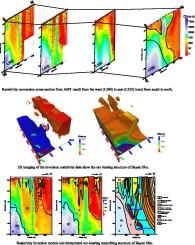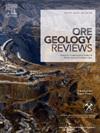As critical minerals in low-carbon economies, rare-earth elements (REEs) are crucial for modern industry, technology, and medicine. The largest known REE resource in the world is the Bayan Obo (BO) deposit in northern China. However, BO features as complicated mineral compositions and has experienced several geological events. As a reuslt, controversy remains about the BO REE genesis and enrichment mechanism, and debates are also ongoing about the controlling structure of this giant deposit. We carried out an multiscale electromagnetism study on BO mineral deposits. The multiscale study consists a microscale on samples, a small scale targeting mineral deposits and a mid scale concerning the mine field. The small and mid scale study were conducted using audio-magnetotelluric (AMT). This study revealed the controlling structure using geoelectrical characteristics. AMT data were acquired from more than 590 stations, and the petro-electromagnetism of several samples was analyzed to understand the geoelectrical features of the ore deposits and their surrounding rocks. The data were interpreted using Bostick transformation and generalized least-squares inversions. We obtained the geoelectrical structure of the BO complex down to a maximum depth of 3500 m, and we present two-dimensional imaging based on the AMT conversion results. The results show that the BO deposit developed at the transition of the high- and low-resistivity geoelectrical structure from south to north. Our AMT results indicate that the tectonic setting of the BO deposit is the transition zone between the rift edge and craton margin slope. The ore geology is presently controlled by the complex slope and the rift remnant, the ore-bearing dolostone in the profiles is Y-shaped. It goes downward from south to north and potentially features a great mineral prospect deep in the BO deposit.



